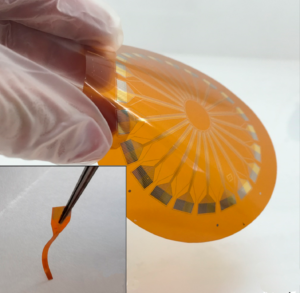
A biofilm can be defined in many ways, but in short we could say that it is a heterogeneous and very complex morphological and chemical accumulation of salts, organic matter and microorganisms, among others, that grow on a surface. There are unwanted biofilms that we strive to fight daily, as is the case with dental plaque. Other well-known and undesirable examples are those biofilms that grow on the inside walls of a drain.
In the field of waste treatment, microorganisms are used to remove undesirable compounds from wastewater or contaminated gas streams. In this case, however, the growth of these biofilm cultures in bioreactors is a very interesting alternative for efficient, robust and compact treatment systems. For the good design and operation of these bioreactors it is necessary to understand what these biofilms are, how they are formed and how they evolve. These biofilms are often less than a few millimeters thick, even less than a few hundred microns in size, making microsensors very interesting tools for studying and characterizing these biological systems. Extremely fragile and expensive commercial glass microsensors are generally used to measure a single compound at a single point in the biofilm. With the help of a micromanipulator, profiles of that compound can be measured inside the biofilms.
The work, A Minimally Invasive Microsensor Specially Designed for Simultaneous Dissolved Oxygen and pH Biofilm Profiling, presents a new device for simultaneous detection of dissolved oxygen and pH specially designed for dynamic profiles of concentration inside biofilms. The developed microsensor consists of two parallel arrays of microelectrodes, one gold for oxygen detection and one platinum modified by electrodeposition of iridium oxide for pH measurement, and incorporates reference electrode and counter electrode. Each of the microelectrodes has a diameter of 50 microns, and the array-shaped configuration of 7 microelectrodes allows the simultaneous measurement of oxygen and pH at 7 points in a biofilm.
The needle-shaped configuration minimizes damage to the biofilm structure during insertion into the biofilm and is made of Kapton, a flexible and inexpensive material. The work presents the development of the sensor and its validation in a flat-plate bioreactor in which a biological culture has been grown that degrades hydrogen sulfide, a highly corrosive, odorant compound present in many wastewater and gaseous currents. the biogas.
This work is the result of the collaboration of several research groups and institutions, basically, of the GAB group of the Barcelona Institute of Microelectronics IMB-CNM (CSIC), the BIOGAP group of the Polytechnic University of Catalonia and the GENOCOV group from the Autonomous University of Barcelona, all of them participants in the ENSURE project (ref. RTI2018-099362-B-C21) funded by the MINECO.
Xavier Guimerà, Ana Moya, Antonio David Dorado, Xavi Illa, Rosa Villa, David Gabriel, Xavier Gamisans, Gemma Gabriel (2019). A Minimally Invasive Microsensor Specially Designed for Simultaneous Dissolved Oxygen and pH Biofilm Profiling. Sensors. Nov; 19(21): 4747 doi: 10.3390/s19214747
Source: UABDivulga